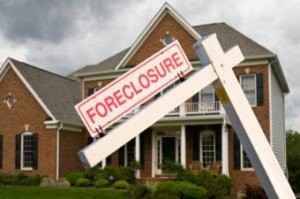 After seven years passing for the black mark of foreclosure to be removed from consumer credit reports after the foreclosure peak in 2010, 1.9 million homeowners will have met the required time after which the Fair Credit Reporting Act requires derogatory information to be removed, according to a report from CoreLogic’s Kristine Yao.
After seven years passing for the black mark of foreclosure to be removed from consumer credit reports after the foreclosure peak in 2010, 1.9 million homeowners will have met the required time after which the Fair Credit Reporting Act requires derogatory information to be removed, according to a report from CoreLogic’s Kristine Yao.
Additionally, by the end of 2020, 1.2 million homeowners who lost their homes to foreclosure between 2011 and 2013 will also become eligible. Despite the potential for millions of homebuyers to reenter the market, historical data shows a more gradual return rate for these “boomerang buyers”, reporting less than half returning to homeownership even 16 years after the foreclosures were completed. Data shows that of the 4.4 million owner-occupied foreclosures completed since 2000, 1 million foreclosed homeowners have returned to the market.
It was also reported that boomerang buyers are, on average, four times more likely to finance with FHA loans than traditional non-distressed, owner-occupied repeat buyers. FHA loans are, as a general rule, easier to obtain than conventional loans for cash-strapped borrowers with past foreclosures in their credit history because FHA guidelines allow potential borrowers to apply for a loan three years after the foreclosure sale date with a minimum 3.5 percent down and a credit score of at least 580.
Surprisingly though, states that were hit hardest by the foreclosure crisis were reported to have the highest shares of “boomerang buyers” return based on 2007 through 2013 total foreclosures. The three highest boomerang buyer states, which were Arizona, Nevada, and Michigan, each saw 32 percent of foreclosed homeowners purchase again. This is a reported 10 percentage points higher than the national boomerang buyer share. Likewise, California and Florida, states with the highest total foreclosures, had boomerang buyer shares of 24.8 percent and 20.3 percent, respectively.
The report shows that the cumulative return rates of boomerang buyers vary by foreclosure vintage. This means that a decade after their foreclosures, 38.5 percent of homeowners who lost their homes in 2000 returned as buyers compared to only 26.3 percent of 2006 foreclosed homeowners who returned at their ten-year mark. The 2007 vintage of foreclosed homeowners is additionally expected to have even lower returns than 2006. The vintage curves from 2008 through 2011, though, did see marked improvements in the shares of boomerang buyers returning to market, but the vintage curves in 2012 and 2013 appear to be declining again. CoreLogic states that it may still be too early to tell.

 DSNews The homepage of the servicing industry
DSNews The homepage of the servicing industry










